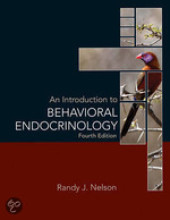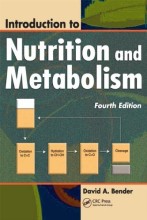Stress, Social Behaviour and Learning - Stress
22 important questions on Stress, Social Behaviour and Learning - Stress
What is a stressor? and a stress response?qa-answernotes-content
qa-answernotes-contentA stressor is a chemical or biological agent, environmental condition, external stimulus or an event that causes stress to an organism.
answer-containerThe fight-or-flight response (also called the fight-or-flight-or-freeze response, hyper arousal, or the acute stress response) is a physiological reaction that occurs in response to a perceived harmful event, attack, or threat to survival.
Explain the hypothalamic-pituitary-adrenal (HPA) axis and include the terms CRH, ACTH, glucocorticoids (cortisol/corticosterone)qa-answernotes-content
The hypothalamus excretes CRH and other releasing hormones to stimulate the pituitary. ACTH is released from here and through the blood vessels it will stimulate the liver to produce glucocorticoids (cortisol/corticosterone) and epinephrine. Epinephrine cannot cross the blood-brain-barrier, so the brain gets stimulated by the steroid glucocorticoid to affect behaviour.
the three stages of General adaption syndrome (GAS)
1) the alarm reaction --> detection of the stressor
2) the resistance --> coping with the stressor
3) exhaustion --> termination of the stress response and the onset of stress pathology, which in extreme cases results in death
- Higher grades + faster learning
- Never study anything twice
- 100% sure, 100% understanding
Adaptive effect stress response
Increased availibility of energy --> epinephrine
respiratory and cardiac rates (oxygen availability) - increased --> catecholamines
rerouting blood flow --> epinephrine
replenishment energy reserves --> glucocorticoids
pain perception decreased --> endorphins and endocannabionoids
growth, reproduction and part of immune function decreased --> endorphins and enkephalins,
suppression feeding behaviour --> CRH
enhancement sensory function and memory --> Vasopressin
where can CRH act as a local stress neuropeptide?
hypothalamus (HPA-axis)
Amygdala is the second pool of CRH, this part is mostly involved with anxiety responses.
What is a CRH-R1 knockout mouse and what is CRH-R1 for?
A mouse which does not have the CRH-1 receptrors and were less anxious at baseline and after alcohol withdrawal than wild-type mice. This receptor also seems to mediate the hormonal, behavioural, and nociceptive (pain) response to stress and appears to be involved in negative feedback regulation of the HPA-axis.
What is a CRH-R2 knockout mouse and what is CRH-R2 for?
This receptor activated suppresses food intake in food-restricted and freely fed mice. It suggests a mechanism for how stress supresses appetite. It binds urocortin with high affinity
What is the highest affinity of mineralcorticoid receptor (type 1 corticoid receptor)?
Higher affinity with circulating glucocorticoids and are usually engaged under baseline conditions.
Higher affinity for glucocorticoids than for the miernalocorticoid aldosterone
What is the highest affinity of glucocorticoid receptor (type 2 corticoid receptor)?
Glucocorticoids increase during a stress response, the low-affinity GRs are activated, which provides negative feedback and brings the stress response back under controle.
What are the functions of the following hormones involved in stress response?
Vasopressin, prolactin, endorphins, enkephalins, urocortin
Vasopressin, to increase the blood volume and pressure which makes the delivery of energy to the muscles more efficient. It also directly affect behaviour by enhancing memory, increase in aggression to protect.
prolactin, to suppress the reproduction temporarily by acting at multiple sites within the HPA.
endorphins and enkephalins, are release in period of stress to relief of pain, thereby inhibiting the reproductive function.
urocortin to be able to recover from stress.
What are the differences between adaptive effects of short-term and pathological effects of long-term stress (table 11.1)?
Short-term stres is useful, but long-term can jeopardize health, economis, and survival.
Chronic stress: effects on hormone-behaviour interactions, e.g. cognitive dysfunction, depression, reproductive function
Reproductive function: Stress inhibit the reproductive function, with infertility treatments is stress often the factor that causes the treatments to fail. Phychological stress of experiencing infertility, in addition to the stress of the treatment, causes more stress and consequently reinforces the infertility.
Depression:
Cognitive dysfunction: The results of this experiment are emphasize the sex differences in perception of stress and in outcome of stress on disease progression.
Chronic stress in African wild dags
Dominant animals had high glucocorticoid concentrations, they are probably exposed to chronic psychological stressor of potentially losing their status.
Consequence of prenatal stress in general: permanent changes in brain morphology offspring, physiology and behavior in adulthood.
permanent changes in brain morphology offspring
physiology --> male offspring produce less testosterone
behavior in adulthood --> more likely to self-administer drugs such as cocaine and amphetamines as adults.
Consequences of prenatal stress in humans: effects in infants and adulthood
infants: reduced birth weight, development delays, attentional deficits, and more.
adults: increased change on schizophrenia
What are the effects of neonatal stress: mild versus severe stress and the consequences in adulthood; relation with neurogenesis
Mild stress is a form of temporarly stress and the infant will be able to cope with it. Tests show that the will be better to cope with stress in adulthood. ACTH levels are higher in
Severe stress in young animals may have long-term decreased food intake and the immuunsystem is responding. This appears to cause elevated response to stress in adulthood.
Neurogenesis is cause by the licking. The licking organizes the brain which makes it more resistant to stressors as adults.
Maternal behaviour and stress related epigenetic influences on offspring. (fig 11.16)
The glucocorticoid receptor gene that is ready to accept the NGF1-A transcription factor, leads to more GR produced in the hyppocampus. This causes the female offspring to adopt the nursing behaviour of the mother from who they received it.
Neonatal stress in human infants: Explain the research on romanian orphans and dysregulation of the HPA axis and what are the consequences
Often seen are symptomes like cognitive deficits, disrupted circadian rhythms among todlers, malnutrition, sensory deprivation, poor hygiene, exposure to disease and low levels of social interaction.
Dysregulation of the HPA axis is caused in these children by prolonged orphanage experience.
Psychosocial dwarfism is one of the consequences
Seasonal fluctuations and stress respons
- arctic birds - winter/molting insensitivity to ACTH
Winter is a period which is a predictable stress period (biorhythms). The stress respons in the winter in these birds is so low that they don't react to other stressors. Catching the birds is a stressor and was in the winter during molting period exceptionally low. The fat stores are too low to power a full stress response.
Q_editbtn
Seasonal fluctuations and stress respons
- white-crowned sparrows
Seasonal fluctuations and stress respons
- white-crowned sparrows
This breed experiences severe weather at the onset of the breeding season. They respond with temporarily abandoning their breeding territories. exogenous treatment did not provokes a migration with good weather.
Seasonal fluctuations and stress respons
- Siberian hamster - reproductive efforts in breeding season, survival efforts in nonbreedings season.
The photoperiod is used to adjust the body to the winter/summer period. A predicted stressor to increase the likelyhood of survival.
During the breeding season, animals invest their energy mainly in reproductive efforts, whereas during the nonbreeding season, individuals invest mainly in survival efforts.
Psychological factors madulating stress response: control, predictability, displacement behaviour, habituation
Most of the time, psychological factors causing the stress. and the main factors that modulate stress responses include
1) control, Suffering from less stress when the situation is in controle of the individual.
2) predictability, reduces the stress of individuals
3) displacement behaviour, having an "outlet", ameliorates the effect of stress. So dealing with the frustration.
4) habituation, Learning that a stimulus that was originally perceived as a stressor is not a stressor, is an important way to modulate stress responses.
The question on the page originate from the summary of the following study material:
- A unique study and practice tool
- Never study anything twice again
- Get the grades you hope for
- 100% sure, 100% understanding































